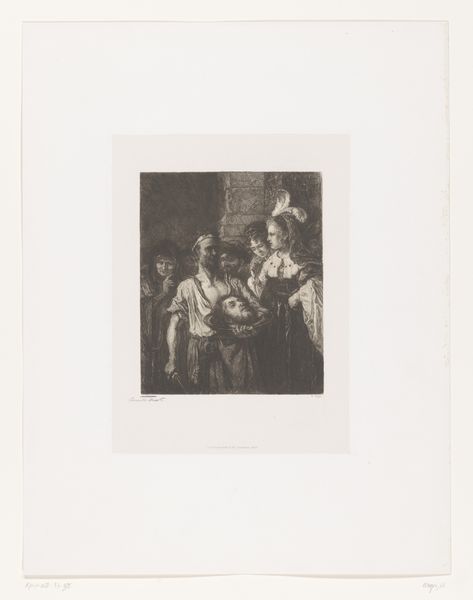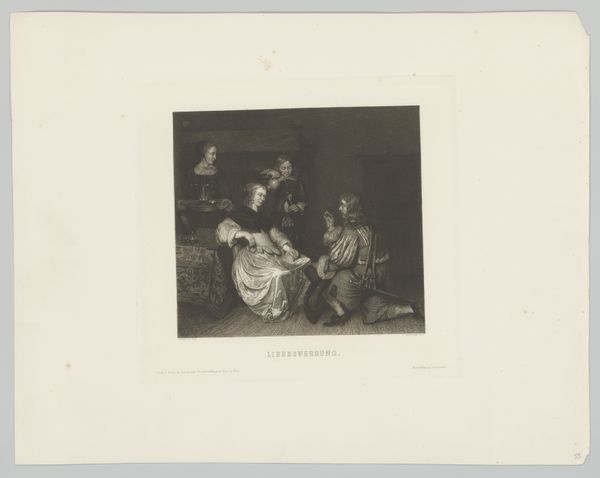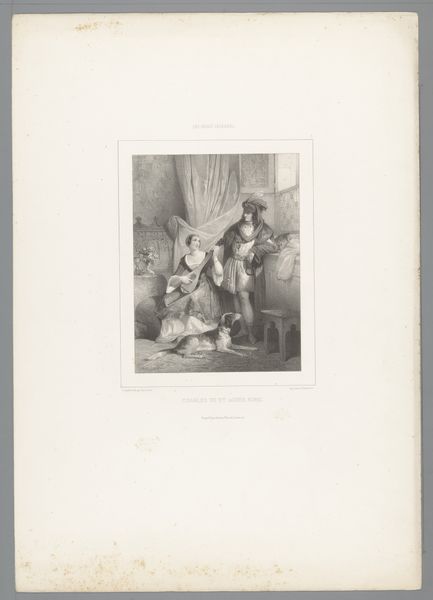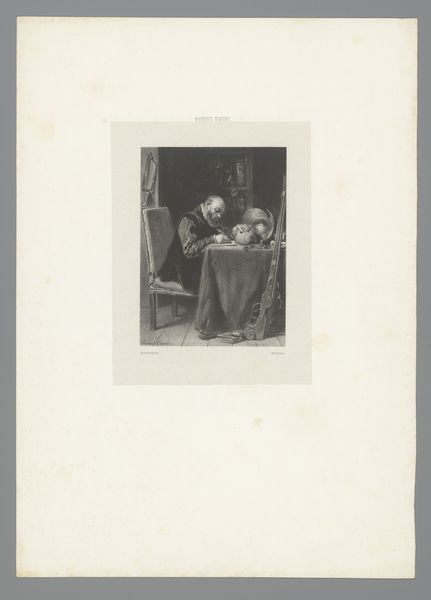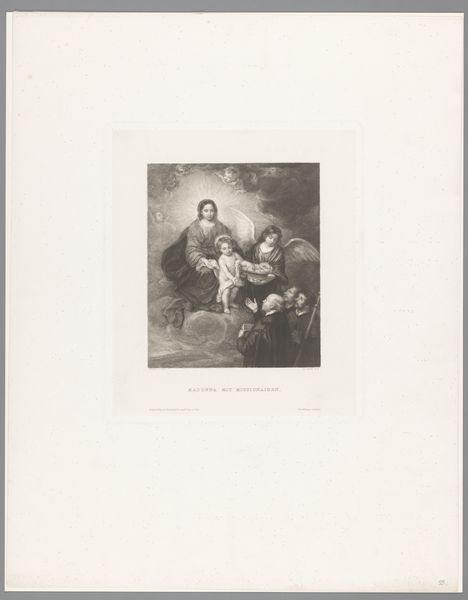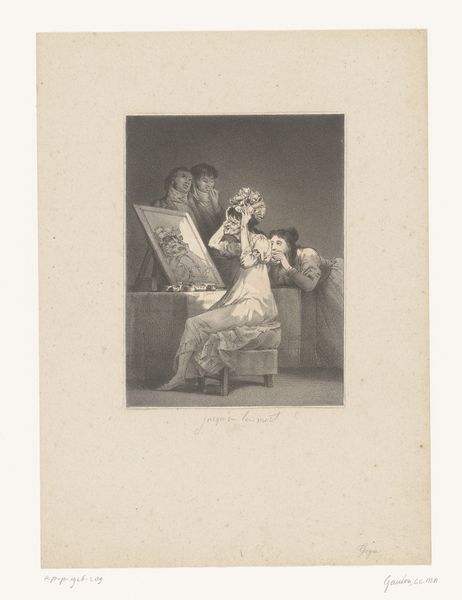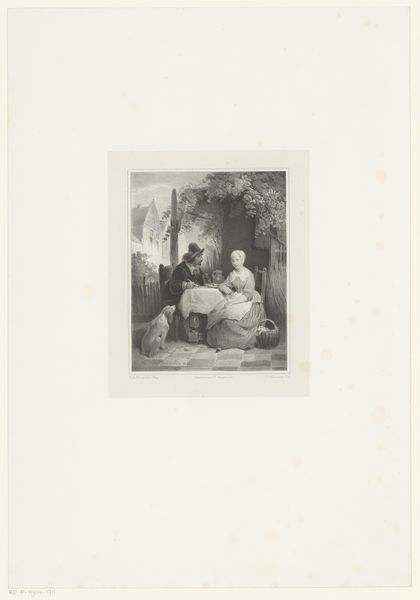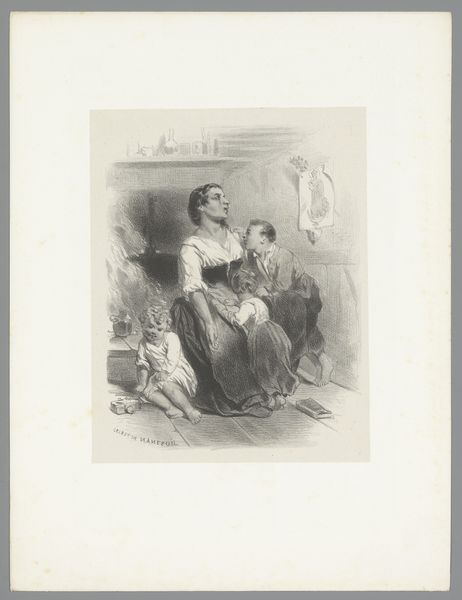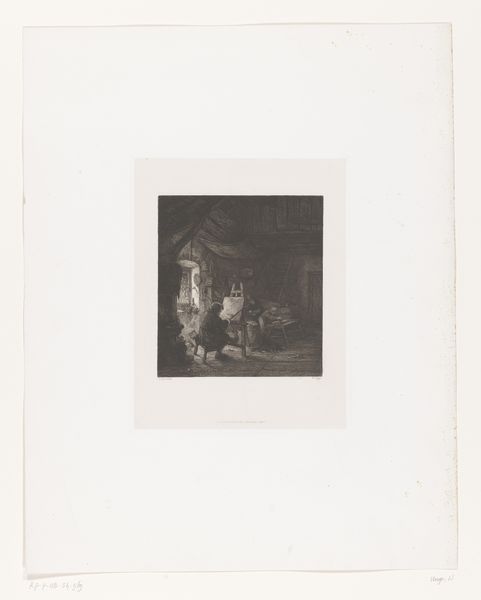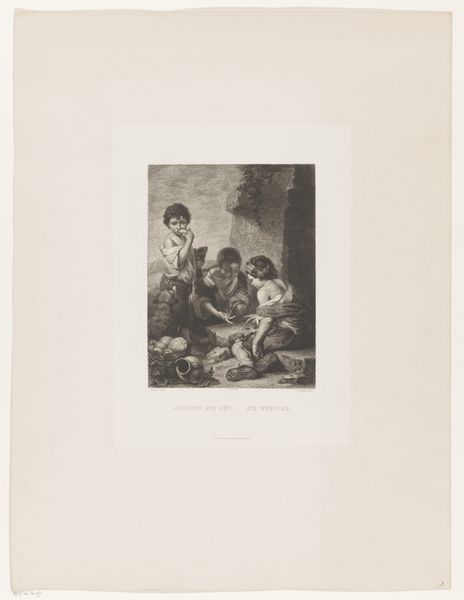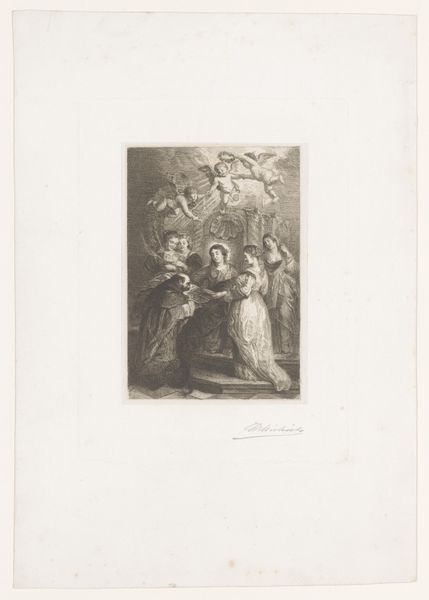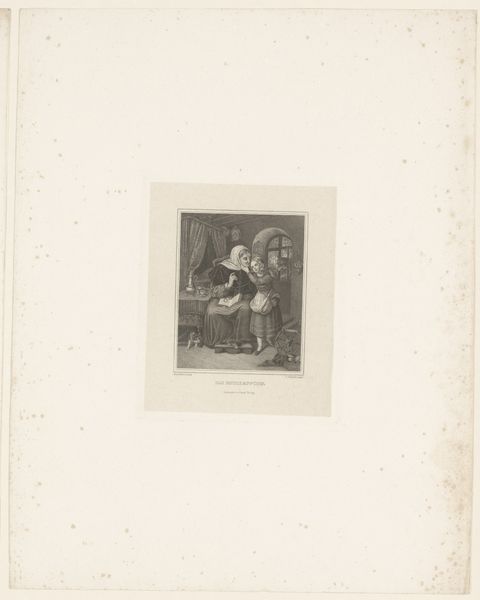
print, engraving
#
portrait
# print
#
figuration
#
11_renaissance
#
history-painting
#
engraving
Dimensions: height 313 mm, width 249 mm
Copyright: Rijks Museum: Open Domain
Curator: This engraving by Jenő Doby, titled "Maria met Christus aan de borst," dating from 1844 to 1907, really strikes a chord. There's a profound tenderness radiating from it. Editor: Immediately, I see how the medium dictates the image's qualities. The fine lines of the engraving produce a texture that almost feels like aged parchment or delicate cloth. Curator: Absolutely. It's as if Doby intentionally selected engraving to echo the Renaissance roots of its visual language, a cultural echo chamber. The figures, of course, are laden with symbolism. Mary, the nurturing mother, represents not just physical sustenance, but also divine grace, eternally offering her bounty to the world through Christ. Editor: Consider, too, the labour and skill. Each line represents time invested in replicating and distributing this idealized image, reinforcing particular cultural narratives about motherhood. Curator: Indeed. And those other chubby cherubic figures? Reminders of love, innocence, but also potential suffering to come. Their presence highlights the paradox of Christ's early life: divinity shrouded in vulnerability. They represent pure potential. Editor: I see those extra cherubs in terms of production as well. These reproductive prints made iconic art available to wider audiences—consumption, then, also drives and sustains the very symbolic meaning you discuss. Curator: A vital point. In the distribution of this work the symbols contained in it becomes widespread, and with them come layers of cultural context we may or may not fully grasp. Editor: Yes. The act of reproducing this image also reveals power dynamics and material conditions, shifting what it can mean over time. Curator: Looking closer, it's amazing the level of detail the engraver accomplished, the depth of shadow and light with tiny etched lines. A testament to a skill set less and less practiced today. Editor: It is. The transition from manual craft to mechanical and then digital reproduction changes everything about art and what it stands for. A true shift. Curator: Seeing how this particular work draws heavily on tradition is inspiring, and invites us to appreciate how it carries the echoes of artistic history within it. Editor: Exactly. To trace how meaning evolves and devolves through material practice is quite fascinating. Thanks for pointing this work out!
Comments
No comments
Be the first to comment and join the conversation on the ultimate creative platform.
